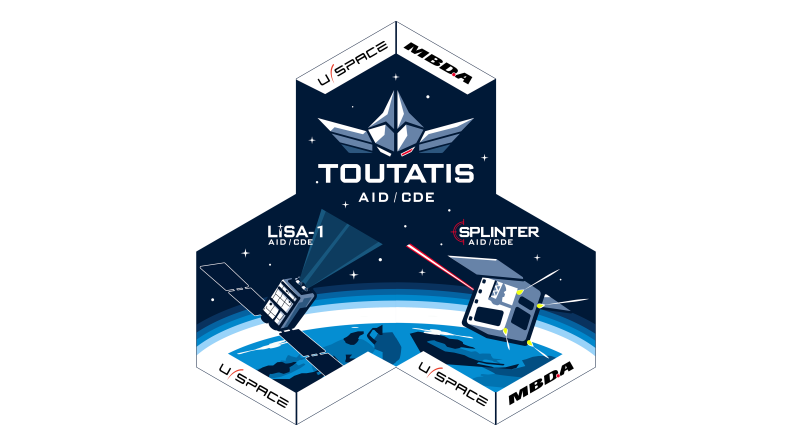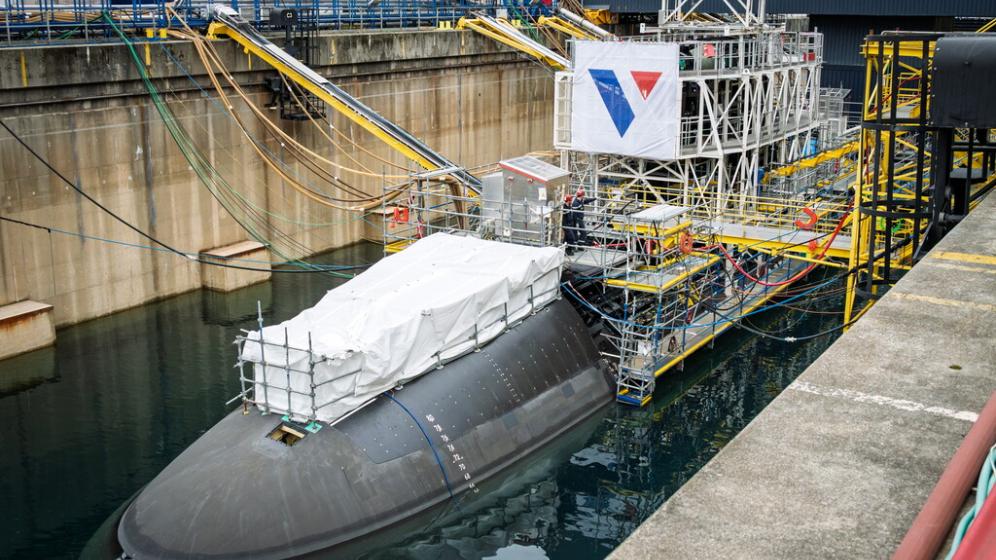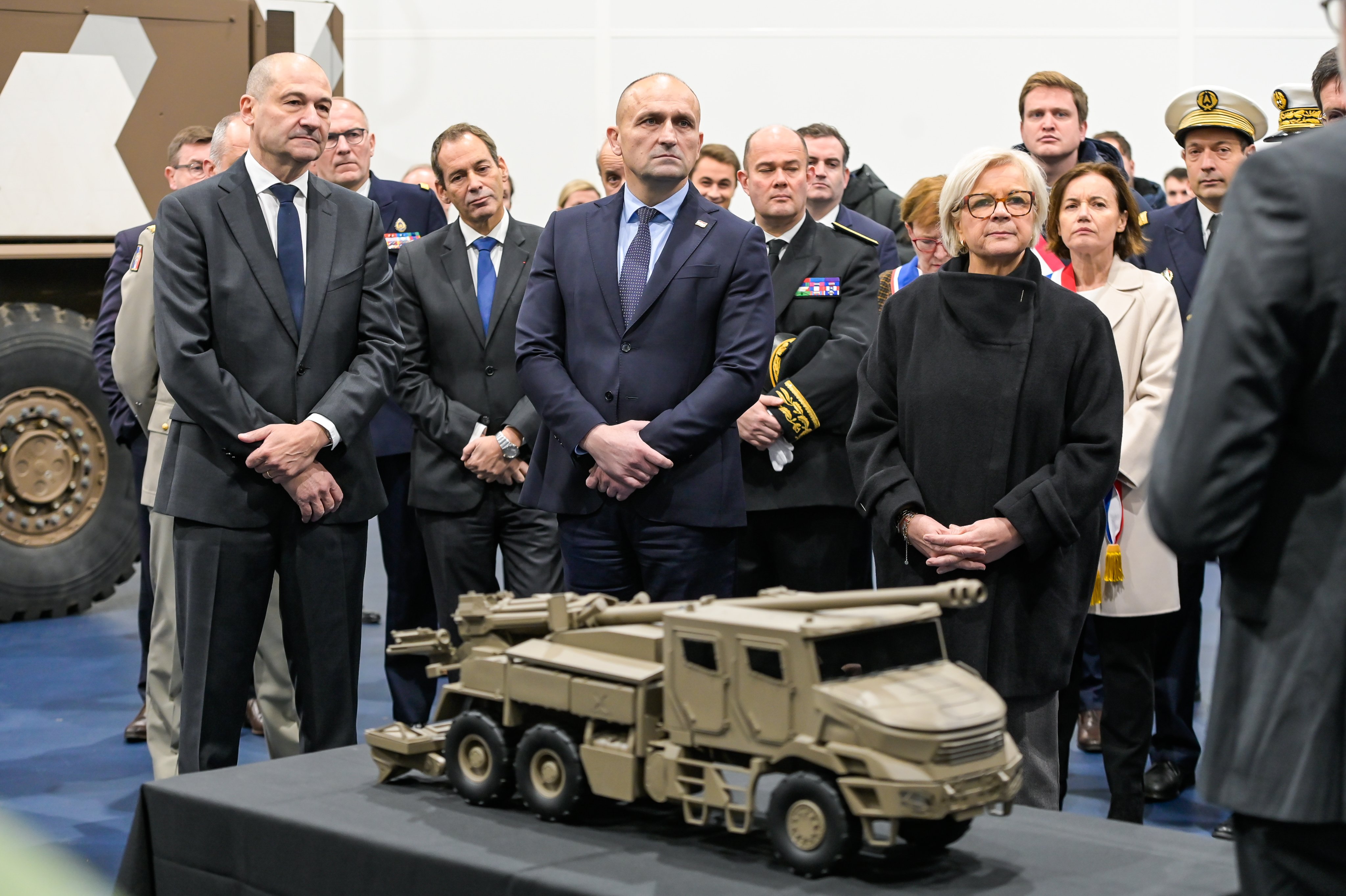Exo-atmospheric space entered the battlefield before the outbreak of the conflict in Ukraine. In the months following 24 February 2022, two space coalitions combining public and private assets began to face each other, turning the contested space environment into a potential theatre of confrontation.
The War in Ukraine and Space Theatre
On 3 October 2022, the head of the non-proliferation and arms control department of the Ministry of Foreign Affairs of the Russian Federation, Konstantin Vorontsov, declared before the First Committee of the United Nations General Assembly: We would like to specifically stress an extremely dangerous trend that goes beyond the harmless use of outer space technologies and has become apparent during the latest developments in Ukraine. Namely, the use by the United States and its allies of civilian, including commercial, infrastructure elements in outer space for military purposes. [This] infrastructure may become a legitimate target for retaliation. Over the days that followed, his declaration made the front pages of the main Western newspapers, along with stories about potential Russian targeting of commercial satellites. It was a first in the sense that, since the start of the conflict, and even before, it has not been the usual practice for a state to envisage officially the destruction of adversaries’ space assets, even military ones. The possibility is mentioned in doctrinal texts and in manoeuvres in space which demonstrate the ability to do it, but such an act of war has never been performed. Commercial constellations seem so far to have been excluded from targeting by orbital strikes because at first sight they had no relation to military matters. A few months later, on 16 February 2023, Mr Vorontsov used similar terms when speaking to the Council of the Russian Federation.(1)
Though the conflict in Ukraine is not the first space war, it is seeing the integration of exo-atmospheric space into operations in a new and managed way. There are advantages in terms of intelligence, of course, but there is also activity by private companies within a military framework—jamming and contest in orbit, for example. What does the conflict in Ukraine show that is new regarding the place of exo-atmospheric space in a high-intensity conflict?
Even before the Ukrainian conflict, space was offering considerable advantages in the military field by virtue of the material and the activity possible in that environment, which encouraged different powers to invest in it. In the weeks following 24 February 2022, space was not excluded from the battlefield and two space coalitions gradually began to confront each other. The conflict therefore invites analysis of current and future forms of combat in space, from a contested environment to a potential theatre of confrontation.
Before Ukraine, Increased Military Interest in Space
Disarray of the geopolitical context of space
Exo-atmospheric space did not have to wait for the Ukrainian conflict to become part of the battlefield: most researchers and military analysts agree that the first ‘space conflict’ was the Gulf War, in which space-based assets (essentially, satellites) were fully integrated into operational requirements, especially in terms of intelligence gathering and targeting. Their use has expanded, and the war in Ukraine has not escaped the trend: each of the belligerents needs space assets in order to fight better.
For several years, exo-atmospheric space has been gradually occupying an important position as a completely separate theatre. The armed forces of a number of countries are shifting effort onto space matters, but the investment demands a very substantial budget and is not the priority of all. Some tend to count on being able to call upon their allies’ capabilities or, increasingly, those of private companies. The exponential increase in investment over the past ten years has shaken up the sector with the deployment of private constellations of satellites such as Starlink, developed by SpaceX. National programmes cannot alone fulfil the growing demand for access to these new technologies.
For countries that do not have space assets, private companies offer the possibility of support in case of need, as was the case of Ukraine at the start of the conflict.
Increased contest in orbit
Space assets are being used more and more in the framework of military operations, so they need to be protected from both natural risks and malevolent acts. Whilst the destruction in October 2021 of an unserviceable Russian satellite by a Nudol missile was seen by Western space powers as a provocation, other threats exist in the environment. Even isolated actions in orbit can result in damage. Among them are the approaches of spy satellites to adversaries’ military satellites, the direct projection into orbit of other objects, attempts to approach or to eavesdrop, interception of signals and jamming.
Russia possesses most of these offensive capabilities in space and tests them regularly. Its activity allows it to demonstrate its power to other space actors even at a time when its space programme is in difficulty.
A limited spatial shock at the start of the conflict
The war in Ukraine did not begin with some gigantic anti-satellite operation in space, spectacular destruction of enemy satellites or wide-scale jamming of Ukrainian and NATO assets in the area. However, it would be an error to exclude the space environment from the early stages of the conflict, since the war in Ukraine most certainly began in space with a cyber attack on 24 February on the Viasat network of satellites and KA-SAT terminals. Ukraine had no national space assets and Russia, not wishing to directly upset NATO at the beginning of the conflict, saw no value in creating a great shock in the space environment. This position was consistent with Russian rhetoric which insisted that it was not a war but an operation. Russian authorities have changed their line since then because Moscow increasingly speaks of direct confrontations with the United States or NATO in the Ukrainian theatre. This change gives greater credence to the possibility of Russian aggression in space.
Two Space Forces Integrated into the Ukrainian Conflict
At the beginning of the conflict each of the belligerents sought to acquire spatial assets, thereby creating a kind of proportionality of assets in the domain through the creation of two coalitions.
A weak Russian space component
The integration of military space assets into operations dates back to the 1990s, led by the United States in the first Gulf War and Kosovo in particular. Russia was going through its difficult recovery following the fall of the Soviet Union and had to adapt to dimensions other than nuclear, which had been its raison d’être throughout the Cold War. During the 1990s and 2000s there was not really any feedback on Russian capability for integrating space assets into operations, unlike in other fields such as electronic warfare and cyber. We had to wait almost until the intervention in Syria in 2015 for military chiefs to start talking of using satellites in the planning and conduct of operations.
Russia currently possesses an operational range of satellites of almost all types, and yet it has little capability for radar observation through cloud(2)—something that could nevertheless prove useful in Eastern Europe in winter. The military Neitron satellite, launched at the beginning of February 2022, might have such a capability that Russian forces could have used when the offensive began. In a similar vein, Scandinavian media(3) reported the use of Chayka hyperbolic aerials before the operation instead of the usual Glonass: equipment that is less accurate but also less open to intercept and jamming, though easier to destroy.
Satellites are now used by armed forces for multiple purposes including targeting. And yet the inaccuracy of Russian strikes appears due to problems with stocks of guided munitions or their quality. The lack of coordination and the inherent logistical issues among Russian forces on the ground hinder the integration of all space assets. To resolve these difficulties the space component needs to be supplemented and restructured. The recent destruction of some critical Ukrainian infrastructure would seem to indicate improvement in the methods or materiel the Russian armed forces use for targeting. The destruction of a bridge in the Odessa region on 10 February 2023 is an example of this.(4)
The contribution of international private industry to the creation of a Ukrainian space coalition
On the first day of the conflict the Russian space component nevertheless faced forces that had no satellite structure available to them. This situation compelled the Ukrainian forces to seek foreign assistance by creating a dual-use spatial coalition. From the start of the conflict the Ukrainian government and private agencies, such as EOS Data Analytics, launched appeals to foreign governments and companies, asking that they make their satellite assets available.
For imagery, companies such as Maxar Technologies and Planet responded to the call in March 2022. In terms of communication, the rapidly deployable Starlink satellites and relay aerials give connectivity to the Ukrainian units closest to the fighting, though this carries considerable risks should the front line move, in terms of security and protection of infrastructure (mobile elements included), which must not be left behind on territory captured by Russian forces. Ukrainian forces have brought this commercial equipment into the very heart of their operations: they use it ingeniously, at the tactical level in particular such as in the fitting of Starlink antennae to mini-drones, which caused American companies to react. At first claiming that the materiel was made available for civilian use, the companies later acknowledged that their aerials could have a limited military use. On 12 February, Elon Musk, CEO of SpaceX, published on Twitter, Starlink is the communication backbone of Ukraine, especially at the front lines, where almost all other internet connectivity has been destroyed. But we will not enable escalation of conflict that may lead to WW3. Using commercial equipment is therefore not always easy since, in contrast to sovereign equipment, it relies on the goodwill of the company that hires out its property. Ukraine is dependent on foreign space-related intelligence assets. Nevertheless, the operational revelation of the advantage offered by this commercial space asset was a considerable shock for Russia, since until then the country had delayed any opening-up to the private sector.
The Russian wake-up call and the race for dual use
One of the objectives of the economic and industrial sanctions, some of which had been in place since the annexation of Crimea in 2014, was to block Russian acquisition of component parts. Dmitri Rogozine, the media relations specialist at the head of the state space activities company, Roscosmos, was pushed aside in July 2022 and replaced by Yuri Borisov, a former deputy prime minister for defence industry. He is a technician of military background, specialised in radio electronic components. Since February 2022 the Kremlin has wanted its armed forces to have access to a wider range of dual-use equipment and commercial satellite constellations. New projects were started to provide Russian satellites with nationally produced micro-electronic modules instead of imported chips. This change to national products is gradually expanding to probes, satellites and motors, among others. Additionally, for their communications since the end of Globalstar, Russian companies are mainly using Glonets satellites.
In October 2022, Yury Borisov lamented the fact that Russian commercial space activity was dragging its feet, and announced an increase in the rate of production of the Sfera constellation,(5) which should eventually bring internet connection to Russia, along with low-orbit communications: but increasing production from one satellite in more than a year to one per day seems more than somewhat optimistic! In this field of activity, China exerts considerable influence on Russia despite its ambiguous diplomatic position. Industrial and commercial cooperation between the two is intensifying for the replacement of Western products.(6) This creates a dependence which gives Beijing a significant means of exerting pressure on Moscow: in September 2022, 51 per cent of Chinese exports to Russia were of mechanical devices, electrical machines and electronic equipment.(7)
Russia is seeking to inject new dynamism into its space programme whilst remaining autonomous, though it is too soon to see the result of this effort. In order that its shortcomings do not allow it to become ousted by other space powers, and to continue to contest the use of space assets for Ukrainian military purposes, Russia continues to occupy space and show its presence there.
War in Space? From Contest in Space to Conflict
Integrating challenge in space into a high-intensity conflict
Regarding the cyber domain, on 24 February 2022 the KA-SAT satellite network used for internet cover for Ukrainian police and armed forces was attacked by Russia, necessitating the replacement of 30,000 modems. On 3 March 2022, the Russian military control systems of the Roscosmos space vehicles were attacked, after which Dimitri Rogozin [then director general of Roscosmos] spoke of a casus belli. In March and April of the same year, Starlink denounced cyber attacks against its terminals.
In the field of electronic warfare, at the start of the conflict the Russian armed forces jammed GPS and Galileo signals of NATO forces operating in Eastern Europe, operations which have since continued. It remains uncertain whether Peresvet(8) will be deployed for the Ukrainian theatre, even though it has been the subject of official announcements and supposed testimonials such as in October 2022, when various pro-Russian activists claimed it had been brought into use in the jamming of Starlink satellites. American experts estimate that the EO MKA satellites that fell out of orbit after a few weeks,(9) could have been sent into orbit over the past two years for operational testing of the laser.
These contest activities are often exploited for the purposes of war communications. Nevertheless, the war in Ukraine is witnessing the generalised use of assets for contest in exo-atmospheric space. Indeed, in March 2022, the Russian Colonel Yuri Krinitsky of the Military Academy of Air and Space Defence in Tver claimed that the priority of gaining superiority in the aerospace environment will be achieved by dazzling, by wiping out, by defeating air defences and infrastructure installations on the ground and in the air, and through similar effects on space vehicles and the enemy’s orbital systems.(10) The quest for space superiority has a double aim: to contest enemy assets on the ground and in orbit.
Recurrence in space contest activity
In 2022 there was a considerable number of Russian military launches—14 satellites. In August 2022, Russia launched a military satellite, Kosmos-2558, into low orbit very close to that of the American intelligence satellite, USA-326. It was a Nivelir inspector satellite, of the same design as 2519 and 2542, launched in 2017 and 2019, which have a capability for projection in orbit that 2558 might also have, according to Bart Hendrickx, an expert on Russian space matters. Any act of that sort close to the American intelligence satellite USA-346 could have major strategic and diplomatic consequences. In a different domain, on 4 January 2023, 2499, a mysterious military inspector satellite launched in 2014 and suspected from the outset of having an anti-satellite capability, ‘disintegrated’ in orbit, to borrow the term used by the 18th Space Defense Squadron of the US Space Force. It created a mass of debris and some in the media speculated half-heartedly that it might have been a demonstration of a kamikaze capability. A military electromagnetic intelligence and communication satellite Luch-Olymp, was launched 12 March 2023 into a more distant orbit: it is the little brother of the one which, in 2018, performed eavesdropping operations against the Franco-Italian geostationary military communications satellite Athena-Fidus. The majority of Russian contest activity in space takes place in low orbit, but Russia is already looking towards higher, more distant orbits.
The Russian position in global anti-satellite capabilities
The Russian offensive action in space foreshadows wider-ranging offensives to allow Russia to gain some time for training to occupy space, if only partially, without having full superiority, given that it is not the only country to have these capabilities—the United States and China also have dedicated programmes.(11)
Russian aerospace forces have greater capacity than resources and, unwilling to wage open warfare in space, conduct manoeuvres there from time to time, a sort of guerrilla tactic to train themselves, to destabilise adverse space powers and occasionally to prevent the use of certain equipment. Theirs is an asymmetric, covert military response.
An article co-authored by three Russian armed forces research officers in March 2023 claims: The theatre of space warfare is the area of exo-atmospheric space within which orbiting constellations of space systems for different uses are based, operate permanently and are rapidly deployed and used as a function of prevailing conditions, to effect support and combat tasks. (…) It is therefore becoming clear that the deployment of space and anti-space combat systems in space or on Earth will be the start of the next revolution in military affairs.(12) Space currently has two battlefronts: the first is the essential support that is now integrated into the field of battle, although its operational use requires a degree of agility, one that Ukraine has been able to acquire through the help of its allies and one that Russia is also putting into effect, albeit with difficulty. The second front, of combat, opened well before 24 February 2022. This combination takes into account a new military dimension of space, one which includes a dual-use arsenal. ♦
(1) US Civilian Space Facilities in Ukraine May come Under Retaliatory Attack—Russian MFA, TASS, 16 February 2023 (https://tass.com/defense/1577235).
(2) However, on 26 May 2023, Russia placed the Kondor-FKA satellite into geosynchronous orbit from the Vostochny cosmodrome, which has radar observation capability. It should be up and running soon.
(3) Reuters-Helsinki, Finland reports GPS disturbances in aircraft flying over Russia’s Kaliningrad, The Guardian, 9 March 2022 (https://www.theguardian.com/).
(4) Feertchak Alexis, Guerre en Ukraine : les Russes auraient utilisé un drone naval contre un pont stratégique [War in Ukraine: Russians may have used a naval drone against a strategic bridge], Le Figaro, 13 February 2023.
(5) Roscosmos is to actively develop commercial industry, said Borisov [in Russian], Ria Novosti, 20 October 2022 (https://ria.ru/20221020/sputnik-1825349209.html).
(6) Manned cooperation in space has not stopped, as it did not during the Cold War. Anna Kikina, a Russian cosmonaut, made a flight with SpaceX in February 2023.
(7) Tkatchev Ivan, Russian trade with China ahead of programme establishes a new annual record [in Russian], RBC.ru, 7 November 2022 (https://www.rbc.ru/).
(8) A laser officially in service since 2019, which could jam orbiting satellites from Earth.
(9) NB Kosmos 2568 was launched on 29 March 2023 from Plesetsk. It might be an EMKA observation satellite, even though there are various theories surrounding the fact that it seems to have the same characteristics as the previous EO MKA—2551, 2555 and 2560.
(10) Krinitsky Yuri (Colonel), Considerations for the development of ways and methods of action for aerospace defence forces [in Russian], Voennaya Mysl [Review of military theory], No 3, March 2022 (https://vm.ric.mil.ru/Stati/item/388551/).
(11) At the start of 2022, China launched two Shiyan experimental ‘technological development’ satellites into geostationary orbit close to that of the American USA-270 intelligence satellite. Since then, it has been a game of cat and mouse between the three countries.
(12) Kovalev A.P., Sotnik S.A. and Sotnik D.S., Space as a new sphere of armed struggle [in Russian], Voennaya Mysl, No 3, March 2023, p. 35-52 (https://vm.ric.mil.ru/upload/site178/lCmCpEOiWw.pdf).







